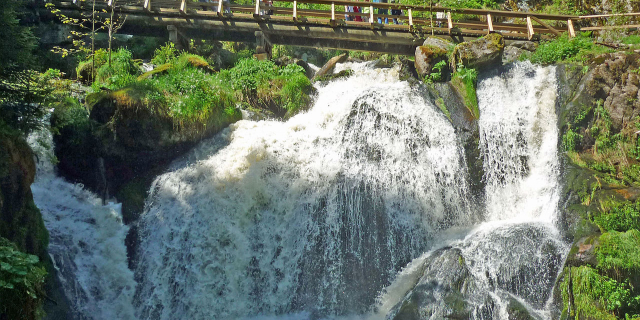Colmar
Colmar (French: Colmar, pronounced [kɔlmaʁ]; Alsatian: Colmer [ˈkolməʁ]; German: Kolmar) is a city and commune in the Haut-Rhin department and Grand Est region of north-eastern France. The third-largest commune in Alsace (after Strasbourg and Mulhouse), it is the seat of the prefecture of the Haut-Rhin department and of the subprefecture of the Colmar-Ribeauvillé arrondissement.
The city is renowned for its well-preserved old town, its numerous architectural landmarks and its museums, among which is the Unterlinden Museum, which houses the Isenheim Altarpiece.
Colmar is located on the Alsatian Wine Route and considers itself to be the capital of Alsatian wine (Read more
Colmar (French: Colmar, pronounced [kɔlmaʁ]; Alsatian: Colmer [ˈkolməʁ]; German: Kolmar) is a city and commune in the Haut-Rhin department and Grand Est region of north-eastern France. The third-largest commune in Alsace (after Strasbourg and Mulhouse), it is the seat of the prefecture of the Haut-Rhin department and of the subprefecture of the Colmar-Ribeauvillé arrondissement.
The city is renowned for its well-preserved old town, its numerous architectural landmarks and its museums, among which is the Unterlinden Museum, which houses the Isenheim Altarpiece.
Colmar is located on the Alsatian Wine Route and considers itself to be the capital of Alsatian wine (capitale des vins d'Alsace).
Reichsstadt Colmer (German)
Colmar was first mentioned by Charlemagne in his chronicle about Saxon wars.[1] This was the location where the Carolingian Emperor Charles the Fat held a diet in 884.[2] Colmar was granted the status of a free imperial city by Emperor Frederick II in 1226.[1] In 1354 it joined the Décapole city league.[3] The city adopted the Protestant Reformation in 1575, long after the northern neighbours of Strasbourg and Sélestat.[4] During the Thirty Years' War, it was taken by the Swedish army in 1632, which held it for two years. In 1634, the Schoeman family arrived and started the first town library. In 1635, the city's harvest was spoiled by Imperialist forces while the residents shot at them from the walls.[5]
The city was conquered by France under King Louis XIV in 1673 and officially ceded by the 1679 Treaties of Nijmegen.[6] In 1854 a cholera epidemic killed many in the city.[4] With the rest of Alsace, Colmar was annexed by the newly formed German Empire in 1871 as a result of the Franco-Prussian War and incorporated into the Alsace-Lorraine province.[7] It returned to France after World War I according to the 1919 Treaty of Versailles,[8] was annexed by Nazi Germany in 1940, and then reverted to French control after the battle of the "Colmar Pocket" in 1945.[9] Colmar has been continuously governed by conservative parties since 1947, the Popular Republican Movement (1947–1977), the Union for French Democracy (1977–1995) and the Union for a Popular Movement (since 1995), and has had only three mayors during that time.[10]
The Colmar Treasure, a hoard of precious objects hidden by Jews during the Black Death, was discovered here in 1863.[11]
































Add new comment